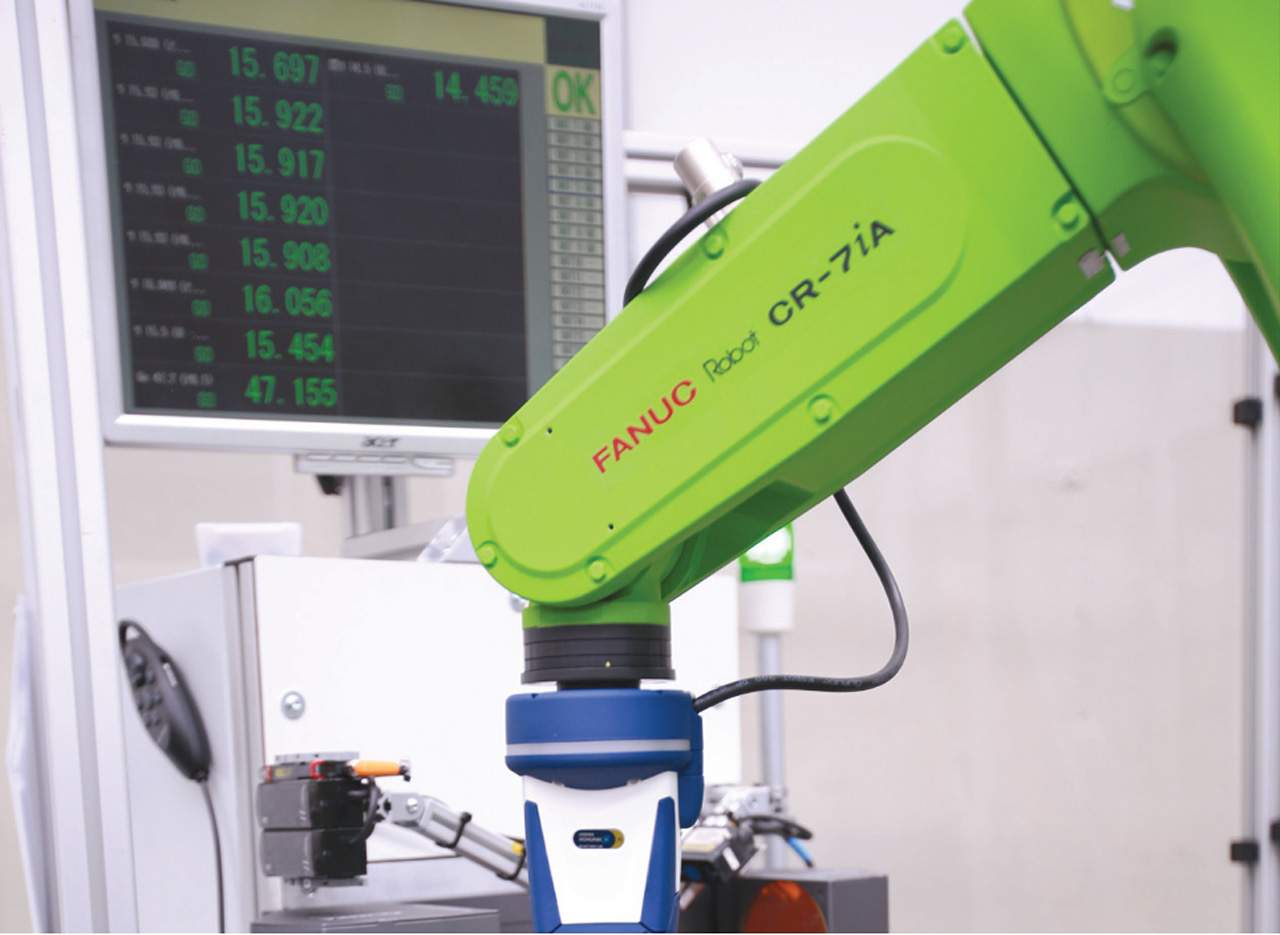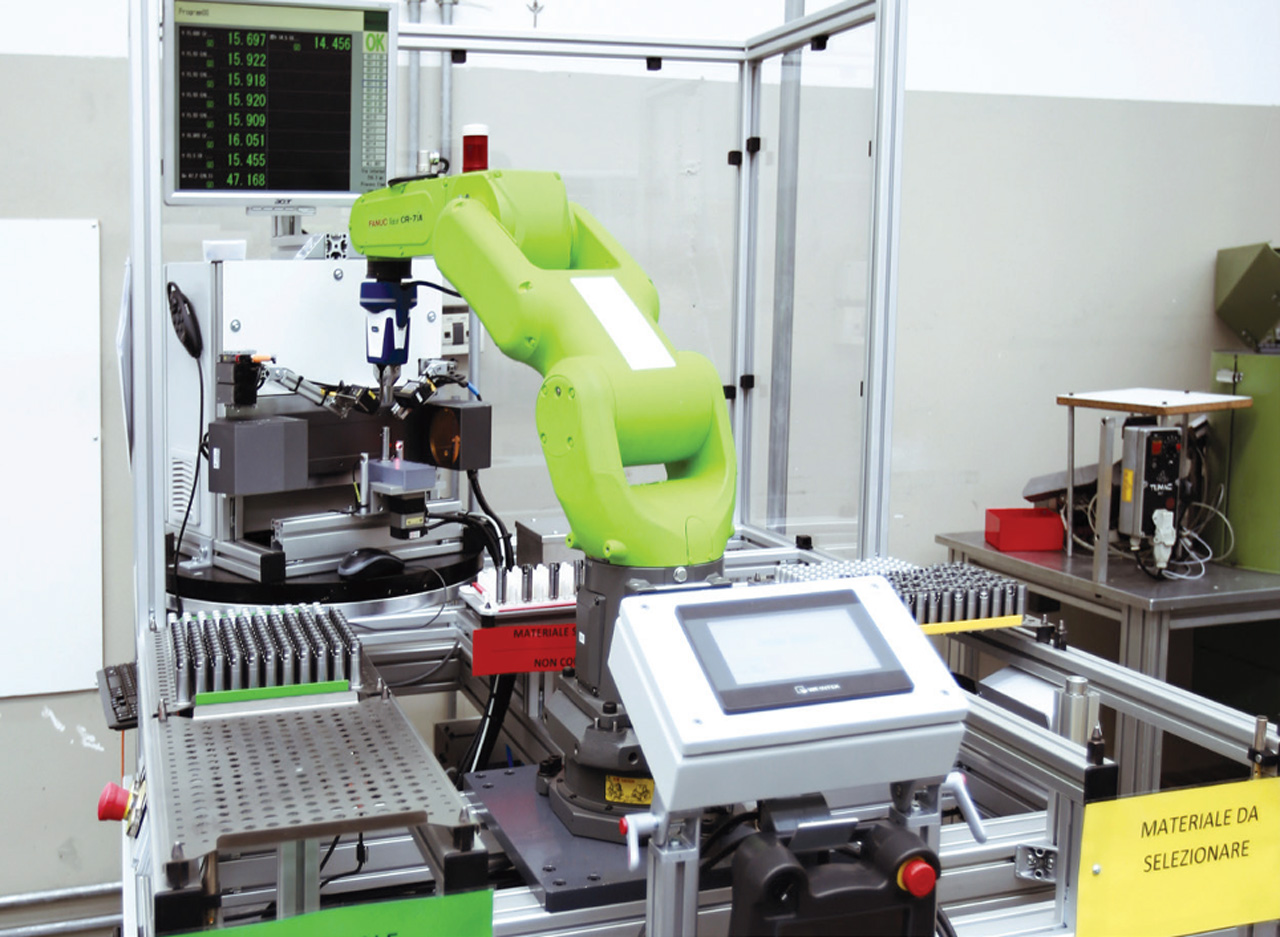
Use case Zannini
ADVANCED ROBOTIC SYSTEM WORKING IN COLLABORATIVE MODE FOR THE MANIPULATION OF TURNED COMPONENTS
The study has led to the development of a robotic test cell for the measurement of small cylindrical parts of metal nature performed with a Fanuc collaborative robot, replacing the operator in the manual and repetitive work of picking. The automation of the process, not only increases the quality of the work, but also ensures a strong increase in productivity since a single operator is able to manage
several robotized stations simultaneously. The focus was placed on the collaborative aspect of the system and on minimizing machine stoppages, as well as on the possibility for the operator to restart it from whatever configuration it has been stopped.
The first phase mainly concerned the study of the kinematics and the dynamics of the robot, which was followed by a design phase and then by the realization of the cell. Among the main characteristics we have:
Portability: the structure has been designed in such a way as to minimize the overall dimensions, so that it can be transported, assembled and dismantled with ease and safety for the operators.
Reconfigurability: it can be easily redesigned for other types of applications without too many changes, in order to quickly adjust its production capacity and functionality in response to sudden changes in the market. As a result, you can streamline your overhead for any changes to the application.
Collaboration: the layout is developed around the idea of teamwork between robot and human, thus allowing easy access to the station to monitor the progress of the work and interact.
The GATEWAY module of flexible interface with the company's MES, as well as the DSS module aimed at defining the inspection strategy with the highest productivity to be implemented, have been integrated to the cell.
In addition, a risk analysis has been carried out on the Zannini use case having as output the indications related to a safe use to be included in the use and maintenance documentation. In addition to the details of the risk analysis carried out by means of an appropriate check list, the critical elements that emerged during the analysis were highlighted for the implementation of subsequent improvement actions.

